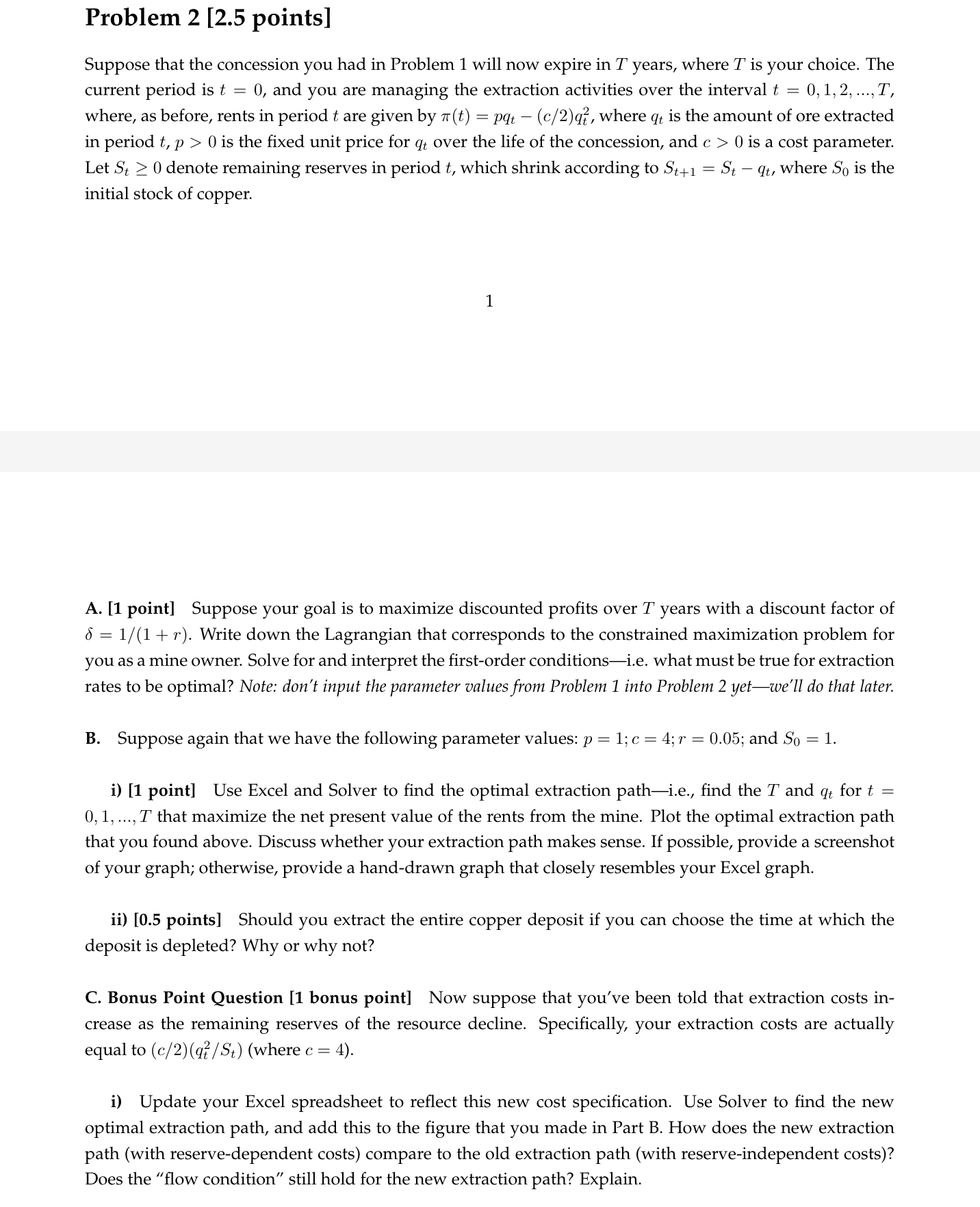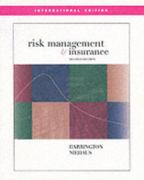Thank you in advance for your help!
Problem 2 [2.5 points] Suppose that the concession you had in Problem 1 will now expire in T years, where T is your choice. The current period is t = 0, and you are managing the extraction activities over the interval t = 0,1,2, ..., T, where, as before, rents in period t are given by rr(t) = pg, * (c/2)q,2, where qt is the amount of ore extracted in period t, p > 0 is the fixed unit price for qt over the life of the concession, and c > 0 is a cost parameter. Let S, 2 0 denote remaining reserves in period t, which shrink according to 3H1 = St 7 qt, where SO is the initial stock of copper. A. [1 point] Suppose your goal is to maximize discounted profits over T years with a discount factor of 6 = 1/{1 + r). Write down the Lagrangian that corresponds to the constrained maximization problem for you as a mine owner. Solve for and interpret the first-order conditionsi.e. what must be true for extraction rates to be optimal? Note: don't input the parameter values from Problem I into Problem 2 yetwe'll do that later. B. Suppose again that we have the following parameter values: p = 1; c = 4; r = 0.05; and SD = 1. i) [1 point] Use Excel and Solver to find the optimal extraction pathi.e., find the T and q; for t = 01 1, ..., T that maximize the net present value of the rents from the mine. Plot the optimal extraction path that you found above. Discuss whether your extraction path makes sense. If possible, provide a screenshot of your graph; otherwise, provide a hand-drawn graph that closely resembles your Excel graph. ii) [0.5 points] Should you extract the entire copper deposit if you can choose the time at which the deposit is depleted? Why or why not? C. Bonus Point Question [1 bonus point] Now suppose that you've been told that extraction costs in- crease as the remaining reserves of the resource decline. Specifically, your extraction costs are actually equal to (c/2)(qt2/S,) (where c = 4). i) Update your Excel spreadsheet to reect this new cost specication. Use Solver to nd the new optimal extraction path, and add this to the gure that you made in Part B. How does the new extraction path (with reserve-dependent costs) compare to the old extraction path (with reserve-independent costs)? Does the \"flow condition\" still hold for the new extraction path? Explain







